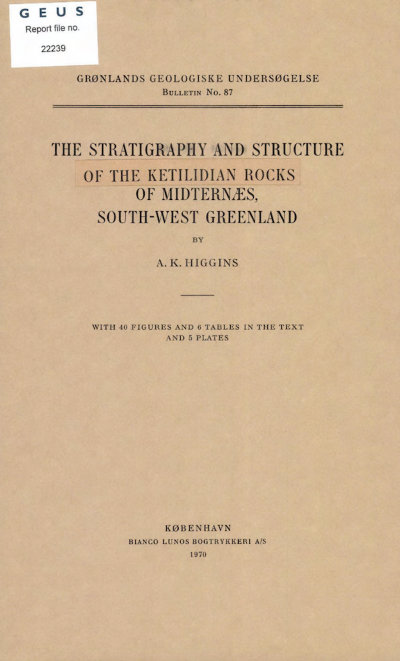The stratigraphy and structure of the Ketilidian rocks of Midternæs, South-West Greenland
DOI:
https://doi.org/10.34194/bullggu.v87.6627Abstract
The stratigraphy of the Ketilidian rocks of the Midternæs area is described and an account given of the various structures which deform them. Correlations between the Midternæs area and the Ketilidian type area of Grænseland, situated immediately south of Midternæs, are made on group and formation level; the Vallen Group and Sortis Group and their respective formations are each recognised. Lateral variations within the Sortis Group are described and a new formation not exposed in the type area is established. The total thickness of the Ketilidian strata exposed is about 5000 m. The early deposits of the mainly sedimentary Vallen Group were laid down in restricted basins and are of variable rock type, thickness and distribution. Later deposits were laid down in deeper water and are more uniform in character and have a more widespread distribution. The mainly volcanic Sortis Group comprises thick sequences of pillow lavas of tholeiitic basalt composition intruded by numerous gabbroic sills derived probably from the same parent magma. Pyroclastics and sediments occur at certain levels. Felsic volcanic breccias suggest that a vent was situated at the southern extremity of the Midternæs area. A large-scale warping of the sub-Ketilidian surface may have preceded the mesoscopic folding. F1 folding produced isoclinal, recumbent structures and was accompanied by low-angle thrusting. F2 folding produced structures with NE-trending, steeply inclined axial planes and often an axial plane cleavage. The minor F. folds are of little significance. Kink folds and conjugate folds occur in Ketilidian and in pre-Ketilidian rocks and their development appears to have occurred under stress conditions comparable to those which produced faults. The principal faults are tear faults. A group of WNW faults have consistent sinistral displacements and a group of faults trending between ENE and NNE consistent dextral displacements. The chronology of the dykes which cut the Ketilidian rocks is briefly discussed. Some WNW dykes may be late Ketilidian, but the major dyke swarm trending between ENE and NNE is probably of Gardar age. It is considered that similar stress conditions influenced both Gardar dyke intrusion and Gardar faulting.
Downloads
Published
Issue
Section
License
This article is distributed under a CC-BY 4.0 licence, permitting free redistribution and reproduction for any purpose, even commercial, provided proper citation of the original work. Author(s) retain copyright over the article contents.


